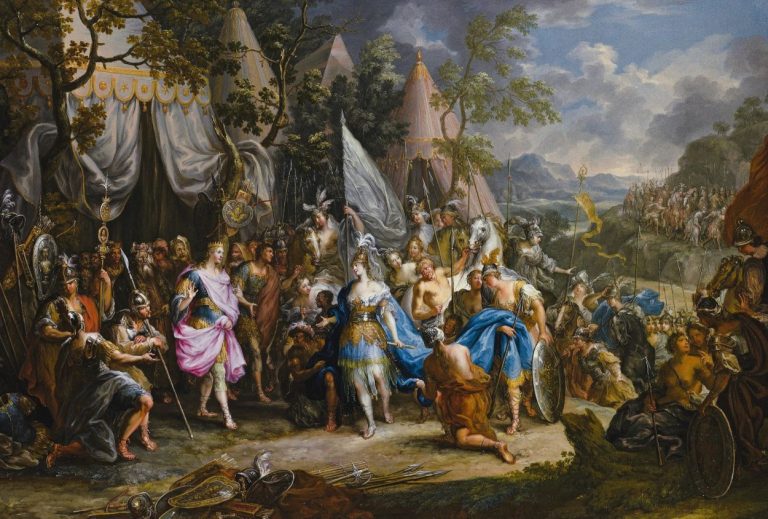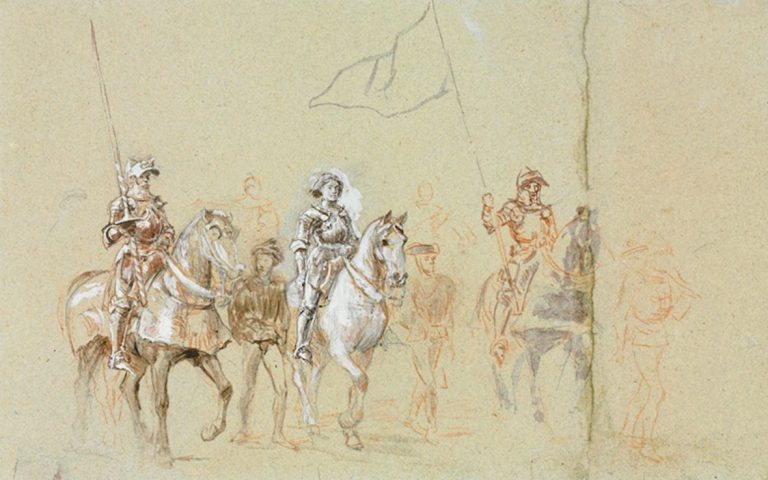
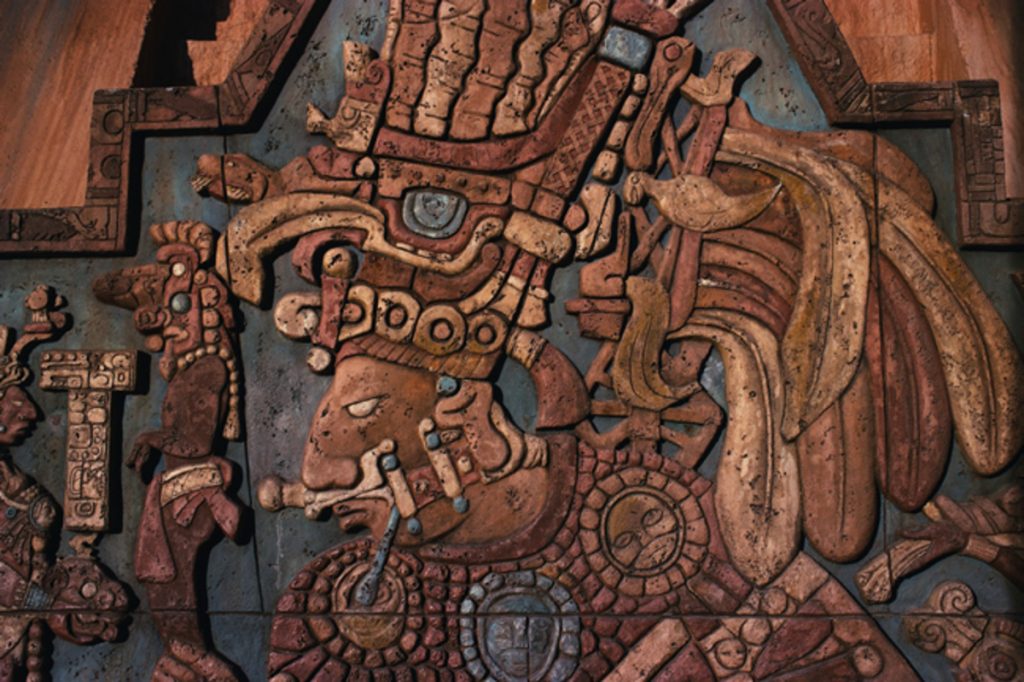
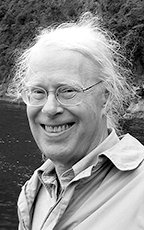
By Dr. Robert M. Torrance
Professor Emeritus of Comparative Literature
University of California, Davis
Introduction
In much of Middle America, from the northern borders of Mexico to the Isthmus of Panama, and especially in Mesoamerica—the large regions once dominated by ancient Mexican and Mayan civilizations—native peoples were Christianized earlier than further north, and populations more extensively mixed. Thus whatever vestiges of ancestral shamanism survive will be intertwined, in most cases, with hardly less primordial ritualisms, aboriginal and Christian. Continuation of an impulse toward personal transcendence not fully satisfied by the fixed rites of these settled agriculturalists bears witness to an unsatisfied need to expand human limits through pursuit of a spiritual goal indispensable to the degree that it remains beyond attainment.
The Curandero in Mesoamerica

Among peoples still aware of an unpredictable wild surrounding the closure of ritual we might expect to find significant traces of ancestral shamanisms. Many Mesoamerican curers are indeed often characterized as “shamans,” though most learn their technical craft, especially in Mayan areas, without personal visions. Thus in Mam-speaking Santiago Chimaltenango in Guatemala the chimán, with his bagful of beans and rock crystals, is both soothsayer and curer; through his divinations alone “can a Chimalteco order his life to suit the unchangeable future” (Wagley 1949, 71). Most divinatory techniques in Guatemala (see Oakes, 178; Wisdom 1940, 344) and throughout Middle America produce automatic results through strict procedures rather than individually variant visions or ecstatic flights of the spirit.
The impersonal nature of the curer’s call in most of this region is underscored by absence of the personal guardian spirit central to shamanism in much of Eurasia and the Americas. The guardian-spirit concept has a Mesoamerican parallel, however, in the animal companion called nagual or tonal . (The former term, from Aztec nahualli, is also used of a witch capable of transformation into animals.) As early as 1530, Antonio de Herrera y Tordesillas (in Foster 1944a, 89–90) noted such beliefs in the Honduran mountains: “The devil deceived these people and appeared in the form of a lion, tigre [jaguar], coyote, alligator, bird, or serpent; and these are called naguals, which is to say ‘guardians’ or ‘companions’; and when the animal dies the Indian bound to it also dies.” Acquisition of this companion, as Herrera describes it, is strikingly similar to guardian spirit quests in many North American tribes. The searcher went to a secluded place “and cried out to obtain the favors which his ancestors had had.” After the animals he sought appeared in a dream, he made a pact that the first one he encountered would be his “nagual and companion for all time.” It is a procedure which a Nootka or Twana, Crow or Sioux, would instantly have understood.
But in virtually no modern account of Middle American nagual beliefs is any personal initiative found, much less a purposeful quest nor even, in many instances, a vision. The name tonal, by which the animal companion is known in parts of Mexico, stems from Aztec tonalamatl, or calendrical book of fates; designation of this alter ego is almost always involuntary and at least implicitly predestined, from birth or before, by forces beyond individual control. The Tzeltals and other Mayan peoples of Guatemala and Chiapas believe that shamans assign naguals “according to the day of one’s birth” (La Farge and Byers, 133); but even where no explicit connection with the sacred calendar is made, a sense of fatality is generally strong. Because no one, in many Mayan villages, knows the identity of his nagual (see Wagley 1949, 65), the sickness or death of any animal at any time may lead without warning to one’s own.
Whether the animal companion’s identity is known or not, the individual almost never takes an active part in its acquisition. Among the Chatino of Oaxaca a specialist determines which animal has left its “tracks” in ashes around the house of a newborn child and ascribes the tracks to its tona (Greenberg, 91–92). A Mixe nagual might be known from a birthmark (E. Parsons 1936, 225), and in virtually every case, as G. Soustelle stresses (124) in discussing the Nahuatl village of Tequila, the nagual (here identified with a species) is not a guardian but only a companion to whose destiny the human being’s is bound[2] in a passive relation from which the individual derives no new knowledge or power.
Thus the Mesoamerican animal companion differs fundamentally (despite probable historical connection) from the guardian spirit elsewhere in the Americas. No quest and usually no vision is needed to acquire this shadowy and often unrecognized “secret sharer” allotted by forces beyond human ken. The nagual, not unlike the natal day-god of the ancient calendar, represents, as Bunzel writes (1952, 275) of the Quiche Maya villagers of Chichicastenango, “an utterly arbitrary and capricious destiny.”

Affliction of the animal companion, which automatically leads to one’s own, is one cause of disease; others widespread throughout Mesoamerica include invasion by evil “airs,” witchcraft and the evil eye, sudden fright (espanto ), and imbalance between hot and cold (Redfield and Villa Rojas, 160; Wisdom 1952, 129–32). Most native curers rely principally (apart from herbal medicines) on magical and thus automatically effective practices in accord with their mostly involuntary vocation. No visionary quest is involved in their cures any more than in their call, and they are thus “shamans” in only a residual sense, by distinction from the priestly officials responsible for communal ceremonies. It is hardly surprising, given their fatalistic legacy, that most curers, instead of perilously venturing into the unknown, rely on infallible techniques to dispel disease from the patient’s body.
Thus the Mayan h-men of Yucatán, far from being a Siberian shaman of the southern jungle, recites prayers, offers food to the gods, and cures by exorcism, herbal medicine, and bleeding (Redfield and Villa Rojas, 75). Another ancient Mayan technique, practiced by the Chorti of Guatemala and the villagers of San Antonio in Belize, is to “seize” the foreign matter from the patient’s body by applying an object such as a fish or tortilla, chicken or tobacco leaf, which draws the sickness into itself (J. Thompson, 71–73; Wisdom 1940, 347–49). Other common curing methods are blowing tobacco smoke, spitting, and sucking.
Even if Mesoamerican curers descend from primeval shamans, long centuries of settled agriculture, stratified societies, and ritualized religions (aboriginal and Catholic) have made them, in most cases, not ecstatic explorers of the unknown but diviners, herbalists, and ritualists, “shaman-priests” empowered by birth and training, not personal vision, to practice standard curing techniques. The questing dimension has not vanished but has been largely confined (as in the Pueblos) to set forms, so that curers embody less a visionary alternative to priestly hegemony than an extension of its dominant outlook from public to private sphere.
Largely confined, but not entirely: in some regions shamanistic traits remain prominent, whether surviving from preagricultural times or generated anew by historical and ecological changes. Herrera’s account of nagual acquisition in sixteenth-century Honduras testifies to a pre-Columbian guardian spirit quest on the fringes of Mesoamerican civilizations, and far to the north, among the pagan Cáhita, “the source of curing power was the dream or vision, through which the individual acquired the assistance of a spirit, in animal form usually, which helped him or over which he had a certain control” (Beals 1943, 64).
Among Mayan descendants of perhaps the oldest continuous New World civilization, emphasis on hereditary office does not preclude a personal bond between curer and spirit, even without a vision. In Todos Santos, Guatemala, this bond takes the form of a metal chain thought to be “the pact between the chimán and the Spirit” (Oakes, 110; cf. 151); if the latter fails him, the chimán can go to its mountain home and break his chain and thus his connection with it. The bond symbolized by the chain distinguishes the shaman-curer, even in a culture so remote from ecstasy as the Maya, from the priest who derives automatic authority from his office and whose rituals depend not on relationship to a particular spirit but on their own efficacy, ex opere operato .
In the Valley of Mexico, the center of Aztec ritualism and Spanish missionary zeal, Madsen (1955, 49–56; cf. 1960, 181–86) reported in the 1950s an extraordinary parallel to Siberian shamanism among Nahuatl speakers in San Francisco Tecospa south of Mexico City. Here Don Soltero Perez’s vocation was no mere matter of birth or training. One night in 1918 lightning struck, subjecting him to recurrent loss of consciousness. During these spells, “his spirit was kidnapped by the ‘enanitos,’ dwarf-size rain deities who have existed in the Valley of Mexico since Aztec times,” and detained in mountain caves until he agreed to become a curer. After six months he consented and was given a spirit wife by whom he had children. He “and all other ‘curanderos de aire’ die twice a year; their spirits then go to a cave of the enanitos where they receive instructions for curing.” In his coercive call and ability to enter the other world when summoned, this curer, Madsen suggests, resembles Siberian (and especially Gold) shamans, even though his treatment of disease remains typically Mesoamerican in its reliance on magical techniques.
Among some peoples, mainly in isolated mountain regions, disease and its cure are thought to involve loss and recovery of the mobile soul. Thus the Sierra Popoluca of Veracruz believe that in cases of espanto a person’s soul will leave his body, captured by dwarfish “masters” of fish and game, until the curer retrieves it by pleading, sucking, or both (Foster 1945, 185). Among the Highland Totonac, a curer “goes, in spirit, beneath the earth, to negotiate ransom” for a soul held captive by evil airs (I. Kelly, 402–03); the pattern is that of the visionary shaman’s journey to the world of the dead. In northern Mexico, among the Tarahumara of the Sierra Madre Occidental, soul loss is the main cause of disease, and the curer must bring it back by projecting his own soul in a dream (Kennedy, 129–31; Bennett and Zingg, 259). Though he owes his office to birth or purchase, his power issues, Lumholtz writes (1: 322), “from the light of his heart, which was given him by Tata Dios (God the Father),” and this visionary enlightenment enables him not only to descend to the world below but “to see Tata Dios himself, to talk to him, to travel through space at will, for the shamans are as bright as the sun.”
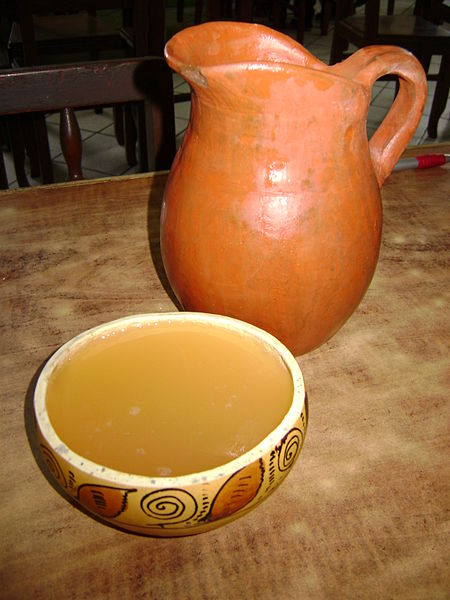
Contributing to Tarahumara visionary ecstasy are intoxicants, especially tesgiüno corn beer (Bennett and Zingg, 253), widely used for inspiration by others, including some generally sober Mayan groups. Use of alcohol before sacred performances in Santa Eulalia, La Farge remarks (161), seems “a mild approach toward ecstasy, a means of achieving a state in which the limited human being can more readily consort with divinity.” Some trace of the Siberian shaman’s frenzied raptures appears to survive even in formalized rituals of the sedate and long civilized Maya.
More important to traditional practices of Middle American peoples are hallucinogens familiar for centuries. Tobacco, peyote, mushrooms, and morning-glory seeds were, Wasson says (1966, 329), “the four great divinatory plants of Mexico at the time of the Conquest,” mediating between men and gods; all are widely used today for medicinal, narcotic, or visionary ends, both by shamans and the people at large. There is little indication in Durán and Sahagún, as we have seen, that such substances were employed at the time of the Conquest to transcend the closure of this world through visionary access to another, but their continued use by widely scattered contemporary peoples, mainly of the mountains, may reflect that shamanistic purpose.
Among the Mixe of northern Oaxaca, the mushrooms called “Our Lords” are believed to give visionary knowledge of cures. But the vision “is always the same” (Miller, 318): a dwarf who answers questions. Far more varied are visions of the nearby Mazatec. In Soyaltepec an apprentice curer goes to the wild to gather seeds of a vine called “Seed of the Virgin” (Villa Rojas, 118); he drinks a potion prepared from it and withdraws to await a vision. After repeated doses, he is transported to the sky, where he sees Our Lord and converses with curers already dead.
Beginning in 1955, when Wasson first attended a vigil by the “wise woman” Maria Sabina, the Mazatec mushroom cult gained a notoriety that may have contributed, he ruefully confessed (Estrada, 20), to undermining a possibly ancient curative practice. Ever since hearing a Wise Man sing for her sick uncle at a vigil with the “saint children” (as the mushrooms are called), María Sabina was attracted by a mysterious language “that spoke of stars, animals, and other things unknown to me” (39), and drew her beyond the limits of her impoverished existence. After eating the mushrooms she heard voices “from another world” (40) and, though illiterate, read from a Book of Wisdom which taught her to summon the Lord of the Mountains, to “see from the origin,” and to “cure with Language” and the wisdom it bestows (56). In her vigils she was transformed into God and entered another world, the vision of which gives meaning to this one.
The Mazatec mushroom experience thus makes explicit the deep affinity between ecstatic vision and language: both breach the closure of the given world and open continually toward one being formed. “The Mazatecs say that the mushrooms speak,” H. Munn writes (88). “The shamans who eat them . . . are the oral poets of their people, the doctors of the word.” By means of “mushrooms that liberate the fountains of language” (92), the Mazatec shaman “has a conception of poesis in its original sense as an action”: the mushrooms inspire him with language and “transform him into an oracle” (93) of the mobile spirit. The process is by nature a perpetual quest: “We are going to search and question,” the doctor woman says (94), and what she seeks are tracks toward “the unexplored, the unknown and unsaid into which she adventures by language, the seeker of significance, the questioner of significance, the articulator of significance.”
Far to the northwest, among the Tarahumara, peyote induces visionary transcendence, and the quest takes form as a pilgrimage for the sacred cactus. The christianized Tarahumara, Lumholtz observed (1:357) in the 1890s, regard the híkuli (as both they and the linguistically unrelated Huichol call the cactus known to the Aztec as peyotl ) as a demi-god to whom sacrifices are offered as the brother of Tata Dios (360). By the 1930s, the peyote shaman was rare, but the híkuli pilgrimage, lasting as long as a month, continued (Bennett and Zingg, 291–92).
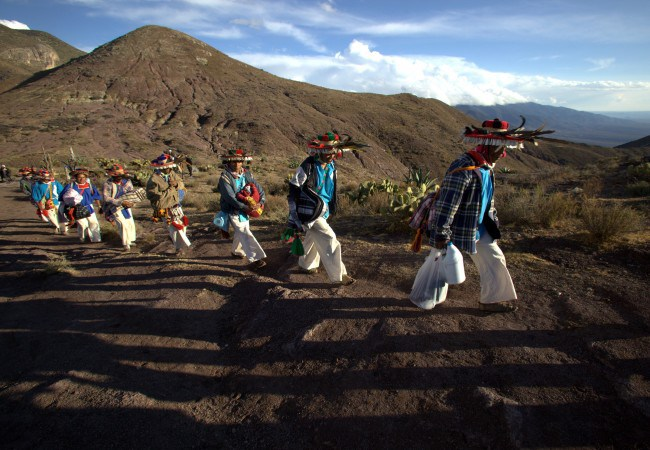
But it is the nearby Huichol, perhaps “the least acculturated major contemporary Indian population in Mesoamerica” (Furst, 5), who have developed the peyote pilgrimage most fully. The Huichol shaman-priest, as depicted by Myerhoff (94–100), is summoned spontaneously in a vision revealed to a solitary young boy (or rarely girl); only after he has undergone rigorous probation and led as many as five peyote pilgrimages will he assume office. Like Eurasian shamans, he can transform himself into various animals, make the magical flight to the land of the gods, and follow souls to the underworld. He divines causes of illness, which he treats by blowing smoke, spitting, and sucking, but he is also a priest who presides, in the absence of both Catholic clergy and a cargo system, over public ceremonies, “embodying and promoting traditional values, jealously guarding the Huichol cultural heritage and identity.” Fixed agricultural rituals and ancestral celebrations are not antitheses of the quest but its prelude, by which the shaman inculcates his followers with the itinerary of the peyote pilgrimage, thus firmly rooting this visionary journey in the communal present and inherited past.
Its goal is Wirikuta, the sacred home of the peyote in San Luis Potosí, some three hundred miles from the Huichol homeland. After purification and confession, the pilgrims themselves become the Ancient Ones (Myerhoff, 136), re-enacting—in the liminal communitas that binds them together throughout their journey—the primeval quest of the gods for renewal of life. Henceforth everything once predictable is “upside down and backward” (149), so that words and actions take on significances hilariously reversing the normal. After traveling to a place called Vagina and following the trail sanctified by the mythical first pilgrims, these hunters of the Deer-peyote reach the oasis of Our Mothers (167) and track the life-giving cactus. The shaman shoots arrows toward a peyote cluster identified as the Deer and implores this Elder Brother not to be angry, for it will rise again. Having shared the plants they have shot, the pilgrims leave the dangerous place at a run, “as though pursued and in great peril” (158). The shaman, after eating peyote, receives messages from the gods and learns the names of things, as he does when he drums and sings at sacred ceremonies. The arduously hunted peyote thus reveals knowledge of other worlds which he shares with those to whom hallucinations induced by the cactus could otherwise communicate nothing transcendent.
The Huichol complex of maize, deer, and peyote entails continual interaction between the shamanism predominantly practiced by nomadic hunters and the priestly rites of agriculturalists: ways of life mediated through the shaman-priest who re-enacts the hunt for peyote that originated in the mythical times celebrated in agricultural ritual. The peyote hunt aims “to return to the birthplace of the gods, to Wirikuta, where all will be a unity, to gather híkuri, which is the maize and the deer, so that ‘we may have our life’ ” (240), becoming the gods who first sought the peyote that each must now find for himself. But this pilgrimage, unlike rites for the corn, looks not toward a fixed ancestral past but toward a never completed future; by openness to this quintessentially shamanic dimension the Huichol “accommodate to new situations” (125) with an innovative flexibility that helps perpetuate their culture. To a Huichol shaman, unlike the once-mighty priests of aboriginal Mesoamerica, “answers were not self-evident or automatically provided” by ritual: for this reason he continues to question, and to quest, long after the ancient priests’ confident answers have been forgotten.
The Mixe and Mazatec, Tarahumara and Huichol examples suggest the adaptive survival (and repeated renewal) in these mountainous regions of the shamanic quest for transcendent knowledge. These peoples were marginal, however, to the civilizations of pre-Columbian Mesoamerica, among whose Maya- and Nahuatl-speaking successors (and others in the Mexican cultural sphere) we find only scattered traces of practices more ecstatic than the traditional curandero ‘s ritualized cures. In at least one culture descended from the ancient civilizations, however—the Tzotzil Mayan municipio of Zinacantan—the curer’s role, despite millennia of priestly ritual, shows strong affinities with the primordial quest of earlier shamans. While cargoholders of the religious hierarchy perform the annual round of mainly Catholic ceremonies in Zinacantan Center, the h’iloletik or shamans practice in the hamlets. These too have their hierarchy, and many of their public functions are priestly (though only superficially Catholic), presumably adapted from practices of their ancient forebears.
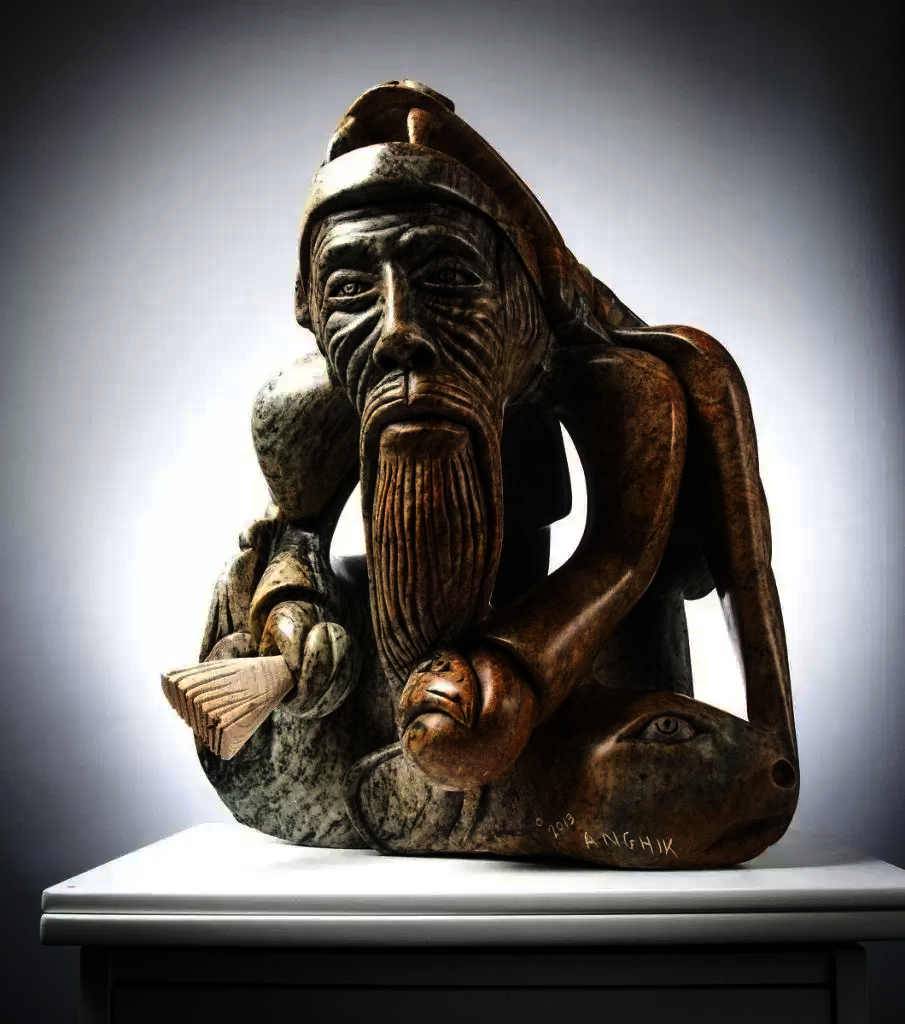
But in other respects the Zinacantec h’ilol embodies not priestly ceremonialism but the questing spirit of the shaman searching for what can never be finally found. The most common way of becoming a shaman is not through heredity or instruction alone, but through a divine call in a series of three dreams over several years. In these the future shaman’s soul is summoned by the supernatural alcalde (corresponding to the highest officer of the cargo system) inside “Senior Large Mountain,” where he agrees to be a shaman and performs his first cures (Vogt 1970, 26–27).[3] In curing rites above all, the pervasive ceremonialism of Zinacantec life reveals its continued affiliation with the spiritual quest. In addition to an animal spirit companion, each Zinacanteco possesses a ch’ulel, an indestructible personal soul whose identity is learned in a childhood dream voyage to Senior Large Mountain, and whoever loses one or more of its thirteen parts requires a special ceremony to recover them (Vogt 1969, 370).
All shamanism inherently allows for unpredictable variations on its accustomed patterns, opening a space of indeterminacy for a spiritual quest that could never take place if everything sacred were given once for all and retrievable only by repetition of an immutable past. It is highly significant, then, that public ceremonies performed by the Zinacantec h’ilol in his priestly role, like calendrical rituals of the cargoholders, “take place without great variation,” whereas his private ceremonies, Silver writes (145–46), “are subject to no such adherence to generally held notions of proper procedure,” making possible a degree of innovation that priestly ritual in theory denies and in practice retards. “The basic patterns of organization resemble a syntax,” Silver suggests, and the ritual symbols a vocabulary: “The ceremonial expressions that result from the interaction of the two are similar to the sentences of a language in their combination of patterning and variability.” It is an interaction fundamental, as we have seen, to the spiritual quest.
The most elaborate of the Zinacantec shaman’s variable ceremonies, “the Great Vision,” is a quest to recover the animal spirit companion, embodying the soul, which has gone astray from its corral. Formalized though the procedure is, with its nineteen steps, fixed prayers, set arrangements of candles, pine boughs, and flowers, ritual baths and meals, and sacrifices of black chickens, the shaman’s ancient search remains its recognizable core. The quest takes the form of a pilgrimage, lasting hours or even days, as the curing party travels up and down mountain trails from the patient’s hamlet to the Ceremonial Center, then to a series of shrines at each of which the shaman prays to the Ancestral Gods inside the mountain, and finally, after sacrificing a chicken, back to the patient’s home. Here the shaman proceeds (if “fright” is involved) to call back the patient’s personal soul, shouting “Come, come!” as he strikes the ground with a staff. The parts of the soul are gathered up, Vogt writes (1970, 96),[4] and led back into the patient’s body, terminating the ceremony by the archetypal shamanic deed of retrieving life from the world of the dead.
Far as the sober Zinacantec shaman’s quest may be from the visionary ecstasies of his Huichol or Mazatec (not to mention his Eskimo or Siberian) counterpart, it testifies to a continued need for transcendence even among so ritualized a people as the modern Maya. Interviews by Guiteras-Holmes with Manuel Arias, a former curer of the Tzotzil-speaking Mayan village of San Pedro Chenalhó near Zinacantan, suggest how essential the hazardous quest of the mobile spirit remains despite centuries of native and Christian ritual. The settled world may be a square and the ceremonial center its navel, and rites inherited from a mythical past may perpetuate its sacred order, but Manuel knows that this world is not a self-sufficient whole. Unlike the cultivated fields, the forest is dark and dangerous: yet this half-alien world of the monte, too, belongs to the experience of being human. When we fall asleep our ch’ulel, or soul, escapes to faraway places where the animal companion roams. But those alluring realms are hostile to human life insofar as they, too, threaten to be sufficient; the healer, in his effort to rescue the patient’s soul from exclusive allegiance to this world of the gods and the dead, cannot rely on coercive rituals alone but “struggles against powerful forces in order to recover the ch’ulel that has been lost, exposing himself to danger by sending out his own ch’ulel in search, and by combating the forces of evil” (137). In this fundamental task he proves true to the shaman’s primordial calling as heroic explorer of the boundless unknown in which the open-ended quest of imperfectly sapient man to expand his intrinsically limited knowledge and power incessantly takes place.
Tropical Quest: Shamans of the Amazon
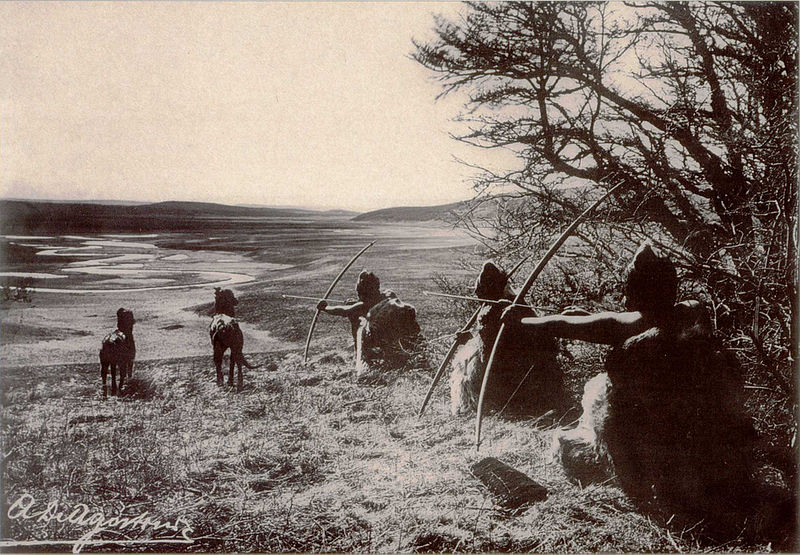
On the high plains and western slopes of the Andean cordillera and its narrow Pacific strip, from the Colombian tropics to the frigid wastes of Tierra del Fuego, shamanistic practices either coexisted with priestly ritualisms or continued, as among the Fuegians, in depleted form. In the sparsely populated regions east of the Andes, on the other hand, above all in the rain forests and highlands watered by the vast Amazon and Orinoco systems, complex shamanisms survived into the present as the predominant, if not unrivaled, expression of tribal religion. With its small semi-migratory bands combining hunting and gathering with slash-and-burn horticulture, the Amazon Basin has been for the most part, in contrast to Mesoamerica and the Central Andes, “a region of the shaman and of minor cults rather than of priests and of the worship of important deities” (Goldman 1963, 4).
Not that communal rituals of fertility, healing, or initiation were absent; on the contrary, studies of Tukanoan peoples of the Colombian Vaupés in northwest Amazonia have demonstrated the extent to which intricate rituals of these relatively settled longhouse communities restore the equilibrium of “an ordered cosmos created in the ancestral past” (C. Hugh-Jones, 1) and allow participant males to be identified with mythical forebears. In the He House rites of the men’s Yorupary cult among the Barasana, “Regular contact with the world of spirits and ancestors . . . ensures that the human world is attuned to a wider and more embracing cosmic order” (S. Hugh-Jones, 38).
But here, as in central and southern California, the principal officiant is normally a shaman (who is sometimes the headman), not a priest of a rival order, and the use of hallucinogens transforming celebrants into animals able to traverse cosmic layers is distinctly shamanistic. The festivals provide the opportunity for participants “partially to experience what shamans experience—to ‘see’ beyond everyday reality” (Jackson, 202). Mythical progenitors are venerated, but there is no lineal “ancestor worship” as in Africa, and few signs of sharp division between shaman and priest such as Lévi-Strauss (1973, 269) found among the dualistic Bororo of Brazil. Spirit possession, though attested in some tribes, is relatively infrequent.
Shamans, Métraux observes (1944, 1:197), display “remarkable uniformity in the entire tropical zone extending from the Antilles to the Gran Chaco” two-thirds of a continent to the south. Like the Tapirapé of northern Mato Grosso in central Brazil (Wagley 1977, 174), many of these peoples had no true religious rituals and therefore no priests, but shamans whose personal characteristics gave direct access to the supernatural. Differences in religious practice are great, but in so vast a region it is again, as in northern Eurasia, similarities that are most striking. The near universality of ecstatic shamanism bears witness to the urgency of the spiritual quest among these tropical peoples.
Some Amazonian peoples divide the cosmos into three layers, others into four or more, but many give the impression, as the Shavante of eastern Mato Grosso did to Maybury-Lewis (284), “of having comparatively little speculative interest” in its structure or origin. Opinions concerning the soul vary greatly, and often seem contradictory to outsiders. Belief in a guardian spirit or nagual attached to an individual for life is fairly rare (Chagnon, 48–50; Montgomery, 124), but belief in a mobile soul capable of traveling forth in sickness or dream—the precondition of visionary shamanism—is very widespread.
The headhunting Jívaro of the Ecuadorian Amazon have developed a rich doctrine of multiple souls in which the quest has a crucial role. Of their three souls, the visionary arutam which protects against violent death is not given at birth but must be acquired. A boy (rarely a girl) begins seeking it at about age six. Accompanied most commonly by his father (Harner 1972, 136–39), he makes a pilgrimage to a sacred waterfall where these wandering souls meet. By day the vision seekers bathe, by night they fast, drink tobacco water or datura, and await an arutam for as long as five days, departing if unsuccessful. If the seeker is fortunate, he wakens to find the earth trembling and a great wind felling trees amid thunder and lightning; while he grasps a tree trunk the arutam appears as a pair of creatures, a disembodied head, or a ball of fire. The seeker boldly touches the arutam, which explodes and disappears; he then returns home, telling no one he fulfilled his quest. After nightfall, the arutam he touched comes as a dream in the form of an old ancestor who promises success and enters his body. Unlike the guardian spirit of many American peoples the Jívaro arutam departs each time a man kills an enemy, so that new arutams must continually be sought by successful warriors. Among most other South American tribes the visionary soul is not acquired through a quest or dream encounter but is a potentiality inborn in every woman and man.
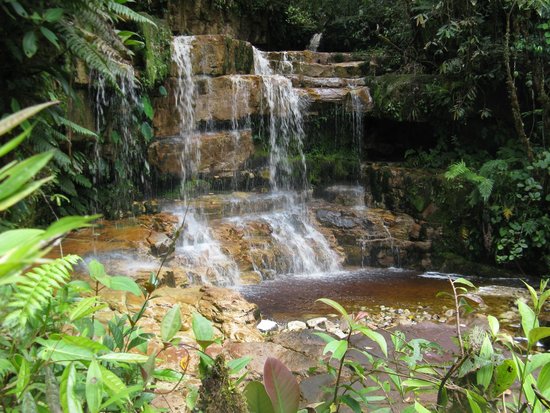
Early and recent writers alike have remarked on the prominence of belief among these peoples in the power of the mobile soul, above all the shaman’s, to transform itself into a bird or animal. In central Brazil, von den Steinen observed a century ago (351), human beings, birds, animals, and fish “are all only persons of different appearance and different attributes” into any of which the shaman can transform himself “and understand all languages that are spoken in the forest or in the air or in the water”; and myths of the Gê, Bororo, and other Amazonian peoples compiled in Lévi-Strauss’s Mythologiques bear witness to this all-but-universal conviction of the interchangeability of human and animal particularly characteristic of shamanistic peoples. The shaman is the self-transformer par excellence, and the animal into which he especially changes himself throughout the forested regions of South America is the swift and powerful jaguar.
If transformation into animal form is one means of transcending the normal human condition, contact with the heavens is another. The sky, the ancestral land where history began for the Bakaïri of central Brazil, “previously lay near the earth, and one could easily cross over to it” (von den Steinen, 349–50); but after men migrated to earth it rose to its present distance. Some peoples worshiped an astral pantheon based on careful observation of the skies (W. Roth, 254–70), and a star-divinity might appear in a vision, Nimuendajú reported (1942, 86) for the central Brazilian Sherente, to reveal supernatural knowledge. At their Great Feast, already a thing of the past when Nimuendajú visited in 1930 (97–98), a man carried a wad of rosinous bast to the top of a pole called “road to the sky” and raised it to be ignited by a heavenly spark. Others climbed up to learn from dead kin how long they would live; finally, an official received a message from the Sun god. In this way the primordial connection between the earthly and heavenly spheres was restored.
Spirits of the dead are widely believed to reside in the sky, in or beyond the Milky Way, which the living—especially shamans—are thought to visit in quest of knowledge or power. Among the Desana of northwest Amazonia, the Milky Way is the zone of contact, through drug-induced visions, between terrestrial and supernatural beings, including the divine Master of Animals (Reichel-Dolmatoff 1971, 43; cf. Koch-Grünberg, 173; Murphy and Quain, 75). Here animal and celestial transcendence intersect in a complex realization of the transformative spiritual quest.
Twins, sometimes identified with Sun and Moon, were prominent South American culture heroes; and although the quest is often submerged in a tangle of other motifs rather than being found in the “practically unmixed form” of Navajo and Pueblo myths (Radin 1942, 81), it finds striking expression in tales from widely dispersed Tupí-Guaraní-speaking peoples. In a myth of the long-extinct Tupinamba of coastal Brazil, recounted by Métraux (1948, 132; cf. 1928, 31–43), twins of the culture hero Maira by Opossum seek their father, who imposes a series of tasks before acknowledging them as his children. Each is killed and revived by the other during these ordeals, but in the end Maira recognizes both. Such widely disseminated tales give mythical expression to the arduous quest re-enacted by the shaman and indeed by every person who combines celestial and animal powers potentially surpassing the normally human.
Shamans acquire their powers in several ways. In the Guianas, the office was apparently hereditary (W. Roth, 333), and among the Jívaro, where warriors must seek a vision-soul, a shaman obtains power through purchase (Harner 1972, 118). But in most cases a visionary call, followed by isolated apprenticeship, is necessary. Thus among the Mehinaku of Mato Grosso a monkey demon offers to be the dreamer’s “pet”; instruction in smoking and three months of seclusion and taboos follow (Gregor, 335). Among the Tapirapé, all young men who wished to be shamans gathered each evening to seek dreams, swallowing smoke and falling into trance. Those who succeeded (as not all did) later took part in a ritualized “fight against the beings of Thunder” and performed cures alongside their mentors (Wagley 1977, 197–99).
Tobacco and other hallucinogens—notably the potent concoction of the Banisteriopsis caapi vine widely known as yagé or ayahuasca —are frequently used to induce the shaman’s visionary call. Even Jívaro candidates, whose purchase of shamanic powers is nearly routine (about one of four men is a shaman!), make contact with the “real” or supernatural world (Harner 1972, 154) only after imbibing the drink. Elsewhere the apprenticeship is normally more arduous and uncertain. Helena Valero, a Brazilian peasant girl captured by the Shamatari of northwest Amazonia, observed the rigors of a secluded young initiate (Biocca, 71–73) who became so drunk with hallucinogenic epená, inhaled day and night, that he could not stand while learning to repeat his teacher’s chants. If he survived this ordeal of up to a month, the initiate would have mastered the spirits and become a true shaman: an experience equated with death and rebirth. Novice shamans of the Colombian Desana, secluded for a year or more, strove in a slow and difficult quest to attain “weapons” in a drug-induced visit to the celestial House of Thunder (Reichel-Dolmatoff 1975, 78–79), until finally “they will see a tree, a piece of wood, or a stone and will suddenly know: this is mine, this is what thunder sent me!” With this, the long search to transcend the given by uniting powers of earth and sky embodied in the most familiar objects attains fruition.

Disease is thought to be caused by intrusion or soul loss, evil spirits, sorcerers, or broken taboos. Métraux (1944, 2:325) finds belief in soul loss widespread in the Andes and Gran Chaco but rare in tropical America, even suggesting (1967, 133) that its prevalence in the Chaco may derive from Andean civilizations rather than native traditions. Many accounts testify, however, to persistence of this ancient belief in widely separated parts of the immense Amazonian region. Only when the soul has been robbed does the otherwise “singularly uniform” shamanistic treatment of illness change, Métraux remarks (1944, 2:325), as the widespread methods of massaging, blowing tobacco smoke or swallowing tobacco juice, and sucking out intrusive objects, along with singing, dancing, and shaking of rattles, are supplemented by spirit possession and ecstatic flight. Some Amazonian shamans, moreover, directly engage hostile spirits in dialogue or battle. One dramatic instance is the cure Im Thurn (336–37) underwent in the 1880s, when suffering from fever, by a Macusi shaman of Guyana. As he lay in total darkness, roars filled the house; the shaman thundered questions and disease spirits shouted answers: “I seemed to be suspended somewhere in a ceaselessly surging din; and my only thoughts were a hardly-felt wonder as to the cause of the noise, and a gentle, fruitless effort to remember if there had once been a time before the noise was.”
Many Amazonian peoples believe, like the Jívaro, that the “real” world can be seen only with the aid of hallucinogens (Harner 1972, 134; cf. Karsten 1935, 444–45). Drinking of yagé and similar substances, not only by shamans but in communal celebrations like those of the Tukanoans (C. Hugh-Jones, 209), “creates an alternative experience of time and space.” The thin shell between the two worlds can be traversed only in hallucinatory trance, and “people say they have visited this other dimension and have seen its inhabitants” (Reichel-Dolmatoff 1975, 192). Whether drunk, smoked, or inhaled through a blowpipe in the form of snuff, the drug enables the soul to communicate with spirits, and sometimes frees it to rise above this world to another. Thus tobacco not only attracts spirits, Wilbert observes (34), but transports man into their realm, “where he can learn how ‘to see’ things that are beyond his physical field of vision.”
After drinking yagé (known as ayahuasca in Peru), the nineteenth-century Ecuadorian geographer Villavicencio reported (Harner 1973a, 155–56), natives “feel vertigo and spinning in the head, then a sensation of being lifted into the air and beginning an aerial journey,” though elevated visions of lakes, forests, and birds are followed by terrible horrors. For the Desana of Colombia, hallucinogenic snuff, or its supernatural master, is the intermediary through which those chosen by it “ascended to the Milky Way and turned into jaguars” allowing them to roam in the forest unrecognized (Reichel-Dolmatoff 1975, 109).
Among some Tukanoan tribes only great shamans of the past could travel to the sky (C. Hugh-Jones, 62), but belief in celestial ascent by living shamans has persisted elsewhere. A Tapirapé shaman could travel to villages of the dead by turning himself into a bird (Wagley 1977, 185), and certain shamans traveled to the sky in their canoes or visited the Pleiades as “Jaguars of the Skies.” Such celestial journeys are a quest for renewal of superhuman powers lost by the primordial schism of earth and sky, but still possessed by hawk, jaguar, and other animals.
The heavenly quest is central to cures for soul loss. In the Gran Chaco, where this diagnosis is common, the shaman sends his own soul in quest of his patient’s, traveling in the sky and under the earth to discover and restore it (Métraux 1967, 133–34). When a Taulipáng shaman of northwest Amazonia wishes to communicate with the Mauarí, or spirits, during a curing session, Koch-Grünberg reported (211–12) in the early twentieth century, he cuts some pieces from a vine resembling a ladder and drinks the brew concocted from them: “In this way this vine . . . becomes a ladder for him to climb up to the land of the Mauarí .”
When her baby appeared to be dying among the Namoeteri, Helena Valero recalls (Biocca, 211–13), the old shapori or shamans, having inhaled epená snuff, sought his shade, examining the various paths it might have taken. The chief shaman then announced that spirits of the Sun had stolen him, and bade the others follow him to the Sun, for when drunk with epená “they really believe they are rising into the air.” Finally, having sung, sucked, invoked the spirits, and sprinkled invisible water, the chief went away. The child, as his mother remembers, “had truly improved.”
The shamanistic quest for knowledge of a transcendent heavenly realm thus plays an important part in tropical South America. Yet the prominence of hallucinogenic drugs in inducing these visions both diminishes the heroic effort required of the spiritual quest—the shaman may be less exception than norm, so easily attained are his visions—and reduces its indeterminate exploration of the beyond. “In spite of the individual nature of the hallucinogenic experience,” Kensinger notes (12) of ayahuasca among the Cashinahua of eastern Peru, “there is a high degree of similarity . . . from individual to individual during any one night of drinking,” giving their visions a repetitively standardized quality. Among the Desana, the shaman “is not a mystic, and the mechanisms he employs are not sacred” (Reichel-Dolmatoff 1975, 201–02). As mechanisms they share the invariability of compulsive rites, and to that extent do not so much open toward the unknown as guarantee a repetition of the expected.
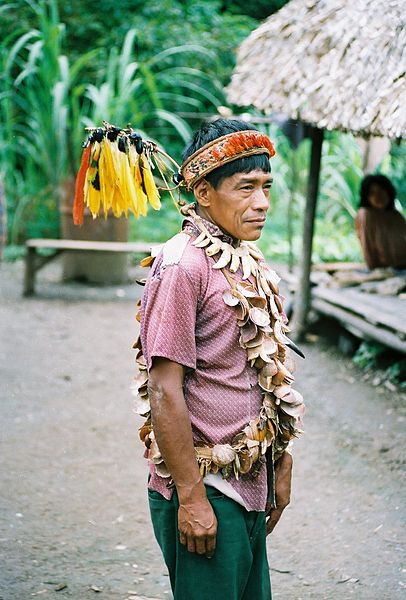
Yet like patterns of ritual or spirit possession, use of hallucinogens does not preclude the exploratory quest but guides it in restricted channels toward a finally unpredictable goal. Its initial effect is often disorienting—”It can ruin a man’s mind,” the Amahuaca shaman-chief Xumu warned his Peruvian captive, Córdova-Rios (Lamb, 131)—if he cannot control his visions; successful effort to gain an always imperfect control distinguishes the shaman from those who submit to stereotyped hallucinations. In Xumu’s chant, as his pupil later remembers it, the emphasis is on incessant search for knowledge (Lamb, 89–90):
We are here again to seek wisdom
give us tranquillity and guidance
to understand the mysteries of the forest
the knowledge of our ancestors . . .
to translate the past into the future . . .
To transcend past in future is to enter a realm of indeterminate danger, as myths of shamanic flight repeatedly stress. The shaman is thus far more than a channel for monotonous hallucinations; indeed his social role, as among the Sharanahua of eastern Peru, may be the only one not determined by kinship or marriage (Siskind, 52). He is therefore uniquely qualified to explore the unknown, so that new songs created from his observations and experiences may become as much a part of traditional knowledge as the old songs had been (162), expanding tribal horizons and effecting change within a framework of perceived continuity.
The ecstatic shaman is no mere technician, then, but an explorer as well: “the reformer of received traditions, the preserver and innovator alike” (Bödiger, 54). The quasi-mechanical effect of communally shared hallucinogens may indeed diminish individual endeavor and constrict the indeterminacy of the quest by channeling it, like ritual formulas, into expected patterns. But wherever unpredictable chance prevails—as among semi-nomadic forest tribes it often does—the Tapirapé and other peoples of the Amazon basin “depended markedly upon their shamans” (Wagley 1977, 195) to assimilate the new and unknown. As religious leader of his people, the shaman is often not only curer but prophet or even messiah; and it is rare, Métraux remarks (1967, 38), “that a messianic movement, even if it aims at re-creating the past, is not at the same time innovative.”
The close relation between Amazonian messianic movements and native myths of a culture hero who leads his people to a paradise on earth or beyond it strongly indicates, Schaden asserts (172), that millenarian conceptions were indigenous to these cultures—above all to the wandering Tupí-Guaraní tribes dispersed in historical times from the Atlantic coast of Brazil to the Peruvian montaña, and in particular to the Apapocuva of southern Brazil and their neighbors. For these peoples the questing culture heroes of myth were no mere legend of long ago but a present reality embodied by the shaman as leader of his people. Maira, father of the mythical twins, according to the Tenetehara of northeastern Brazil, came to earth in search of a “Beautiful Land,” and there created man and woman, and taught them to procreate, plant, and prepare manioc before he returned to his carefree “Village of the Gods” (Wagley and Galvão, 100–01). In widely separated parts of the Amazonian forests his people have continued his quest.
The classic account of their wanderings was written by a young German, Curt Unkel, adopted by the Apapocuva as Curt Nimuendajú. At the beginning of the nineteenth century shamans from this and other Guaraní tribes prophesied imminent destruction of the world, gathered disciples, and with dances and chants set off “in search of the ‘Land without Evil,’ which . . . most thought was in the east, over the sea” (Nimuendajú 1914, 87). The roots of such movements, in which whole tribes migrated hundreds of miles through hostile terrain, go back at least to the sixteenth century; to Nimuendajú (335) the apocalyptic belief of the Apapocuva expressed the “disconsolate pessimism” of a dying tribe which had lost its faith in the future. Yet by his own account (357–60), it is their unshaken perseverance in this desperate quest that is most compelling. For as long as a year after the shaman’s visionary summons his people strenuously danced to elicit a revelation of the way to the east, demonstrating “an utterly astonishing determination and persistence” and enduring the harshest privations with no thought of retreat: forward was the only direction they knew. Reaching the coast, they danced again in hope of being lifted through the air to the Land without Evil beyond the sea, until “the way to the beyond had been shut off forever.”
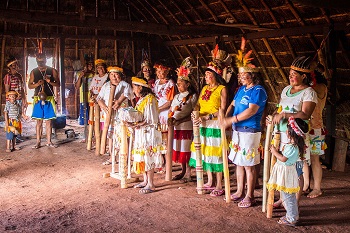
A small band of Paraguayan Guaraní whom Nimuendajú met, to his amazement, near São Paulo in 1912 showed how persistent this quest could be. “They wished to go over the sea to the east, and their confidence in the success of this plan,” he writes (361–63), “brought me almost to despair.” Only after utter failure of chants and dances on the shore had at last brought disillusionment did they reluctantly follow him to a reservation west of the coast; but when he returned a month later he saw them packing up their belongings and setting out once more, “very probably again to the sea; I have never heard of them again.” This small band of undaunted seekers, like other Tupí-Guaraní speaking tribes over centuries of recorded history (cf. Métraux 1967, 9–41; Eliade 1969, 101–11), and perhaps long before, had taken the shaman’s vision of another world in the literal sense and unstintingly committed themselves to its realization, however long it might take, and whatever price they must pay for their intransigent resolve in the face of insuperable odds. The spiritual quest had become too vital a part of their life as a people to conceive of abandoning one without surrendering the other as well.
From The Spiritual Quest: Transcendence in Myth, Religion, and Science, by Robert M. Torrance (1994, University of California Press), published by UC Press E-Books Collection free to the public.
